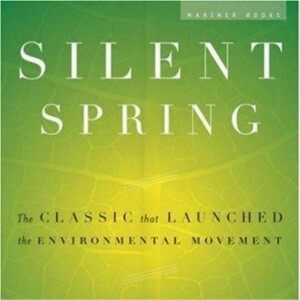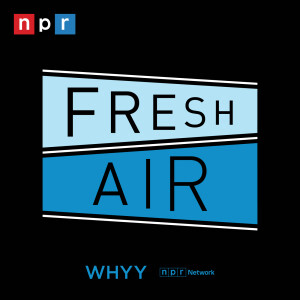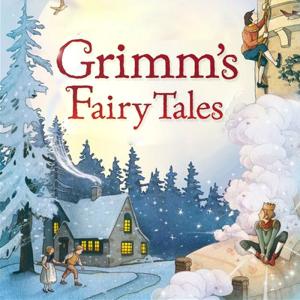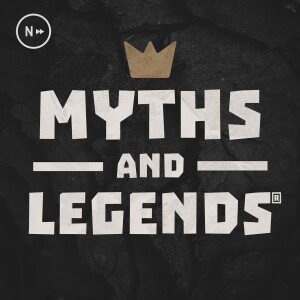

Silent Spring Summary: Rachel Carson’s Environmental Wake-Up Call
"Silent Spring" is a groundbreaking environmental science book written by Rachel Carson and first published in 1962. Carson was a marine biologist and nature writer, acclaimed for her earlier works on ocean life. With a deep connection to the natural world and a background in both biology and writing, she was uniquely positioned to communicate intricate scientific ideas to the general public. Born on May 27, 1907, in Springdale, Pennsylvania, she graduated from Pennsylvania College for Women (now Chatham University) and later earned a master’s degree in zoology from Johns Hopkins University in 1932.
Before "Silent Spring," Carson enjoyed a significant career with the U.S. Fish and Wildlife Service and had already published three well-received books about marine biology that reflected her respect for the natural world as well as her scientific understanding — these were "Under the Sea Wind," "The Sea Around Us," and "The Edge of the Sea."
"Silent Spring," however, marked a significant turning point not only in Carson’s career but also in public awareness of environmental issues. The book focuses on the harmful effects of pesticides on the environment, particularly those of DDT, a then-popular chemical that was widely used without regard for its environmental and health impacts. Carson meticulously described how DDT entered the food chain and accumulated in the fatty tissues of animals, including humans, and how it caused cancer and genetic damage. A notable feature of the book is its challenge to the chemical industry and the way these corporations promoted pesticide use while downplaying the chemicals' effects on all forms of life, including humans.
The context of "Silient Spring" is set in the post-World War II era, a time characterized by technological optimism and rapid industrial growth, including in the chemical industry. Pesticides like DDT were initially celebrated for their effectiveness in controlling mosquito populations and reducing instances of malaria and other diseases. The chemical industry was booming, and pesticides were being used in unprecedented quantities without much public understanding of their potential environmental and health impacts.
Carson's book brought these issues to the fore, leading to a major shift in public perception. Despite facing significant criticism and pushback, including accusations of being alarmist and even lawsuits from chemical companies, Carson’s work ultimately led to a national reevaluation of pesticide use and environmental policy in general. Her writing played a crucial role in the eventual nationwide ban on DDT in 1972 and spurred an environmental movement that resulted in the creation of the U.S. Environmental Protection Agency (EPA).
"Silent Spring" is often heralded as a foundational text in the environmental movement, credited with awakening the public and lawmakers to the necessity of questioning and regulating chemical practices that risk human and environmental health. Carson’s ability to synthesize scientific studies and present them in a way that was engaging and accessible to ordinary readers made her work one of the most influential writings in modern environmentalism.
Chapter 2 Analysis of Main Characters and Plot"Silent Spring," written by Rachel Carson and published in 1962, is a groundbreaking environmental science book rather than a novel with characters and a narrative plot. Instead of characters, the book focuses on examining the detrimental environmental effects caused by indiscriminate use of chemical pesticides, particularly DDT.
Key Themes and Clues to Understanding "Silent Spring":
- The Power of Chemical Pesticides: Carson opens with a fictional account of a town, which suffers a series of plagues due to pesticide overuse. This "Fable for Tomorrow" serves as a cautionary tale setting the tone for real-life examples and scientific evidence presented later.
- Ecological Connections: Carson explains how all elements of an ecosystem are interconnected. She emphasizes that pesticides can kill insects and harm birds, fish, and other wildlife, showing that the impact of pesticides is not limited to intended targets.
- Bioaccumulation and Biomagnification: The book discusses how pesticides accumulate in the environment and in the bodies of animals over time, becoming more concentrated as they move up the food chain, which leads to severe ecological and health consequences.
- Human Health Implications: Carson argues that pesticides can cause cancers and other illnesses in humans. She critically appraises the then-current practices of pest control, particularly those that do not account for human exposure and long-term effects.
- Alternative Approaches to Pest Control: Carson advocates for biological and natural methods of pest control as alternatives to chemical pesticides. She encourages more research and adoption of biologically based methods that do not harm the environment or human health.
- Response to Critics: Throughout the book, Carson addresses the criticisms from chemical companies and some sectors of the public, reinforcing her arguments with scientific data to support the need for regulations and awareness.
Understanding "Silent Spring" requires recognizing its role in launching the modern environmental movement. It brought environmental concerns, particularly about chemical pollution, to the public eye, leading to policy changes and a shift towards more sustainable practices. Through detailed description and a well-substantiated critique of pesticides, Carson effectively altered public perception and policy regarding environmental protection and public health.
Chapter 3 Theme Exploration and Analysis"Silent Spring," published in 1962 by Rachel Carson, is often credited with launching the global environmental movement. The book delves into the harmful effects of pesticides on the environment, with a particular focus on birds. Here's a deeper exploration of the main themes and topics of the book:
- The Impact of Pesticides: Central to "Silalike "DDT"nt its unchecked use as an agricultural pesticide is systematically contaminating water, soil, and air, and accumulating in the food chain. Carson meticulously details how these chemicals, intended to control pests, are in turn killing birds, fish, and beneficial insect species, and harming human health.
- Ecological Balance: Carson emphasizes the interconnectedness of all living organisms and the environments in which they exist. She points out how the mass killing of insects leads to unintended consequences, including the disruption of natural balances and the elimination of beneficial organisms that maintain the health of ecosystems.
- The Problem of Bioaccumulation: Carson was among the first to explain the environmental concept of bioaccumulation to a wide audience. She describes how pesticides absorbed by organisms at a lower level in the food chain are concentrated as predators consume prey, eventually reaching toxic levels in the apex species, including humans.
- Critique of Chemical Industry Practices: Carson is critical of the chemical industry's role in promoting pesticide use without fully understanding or disclosing the chemicals' harmful effects on the environment and public health. She accuses the industry of spreading disinformation and discouraging independent scientific research that might reveal the adverse effects of their products.
- Human Hubris and Nature: Carson argues against the hubristic attitude that humans have the right to control nature through chemical means, suggesting that this mindset leads to reckless behavior and disregard for the natural world. She advocates for a more humble and respectful approach to environmental management.
- The Power and Limitations of Science: While she champions scientific research and methodical observation, Carson also criticizes the scientific community for its partiality toward solutions that are profitable over those that might be more in harmony with natural processes. She promotes the precautionary principle, arguing that chemicals should be thoroughly evaluated for environmental and health impacts before they are widely used.
- Alternative Approaches to Pest Control: Instead of chemical pesticides, Carson advocates for biological pest control methods, such as using other living organisms to control pest populations, and developing pest-resistant crop varieties. She supports the use of more sustainable, eco-friendly agricultural practices.
- The Role of the Public and Government: Carson aimed to inform not just the scientific community but also the wider public about the dangers of pesticide overuse. She believed informed citizens could advocate for better regulations. Her work led to the eventual ban of DDT in the United States and spurred changes in laws regulating chemicals, including the establishment of the Environmental Protection Agency.
"Silent Spring" is not only a critique of mid-20th-century practices but also a visionary book that calls for a fundamental shift in how humanity interacts with the natural world. Its messages about the dangers of chemical pollutants and the interconnectedness of all life remain highly relevant in today's global environmental context.
Book https://www.bookey.app/book/silent-spring-by-rachel-carson
Quotes https://www.bookey.app/quote-book/silent-spring
YouTube https://www.youtube.com/watch?v=Z2iouxXeXjQ
Amazom https://www.amazon.com/Silent-Spring-Rachel-Carson/dp/0618249060
Goodreads https://www.goodreads.com/book/show/27333.Silent_Spring
More Episodes
All Episodes>>Create Your Podcast In Minutes
- Full-featured podcast site
- Unlimited storage and bandwidth
- Comprehensive podcast stats
- Distribute to Apple Podcasts, Spotify, and more
- Make money with your podcast












